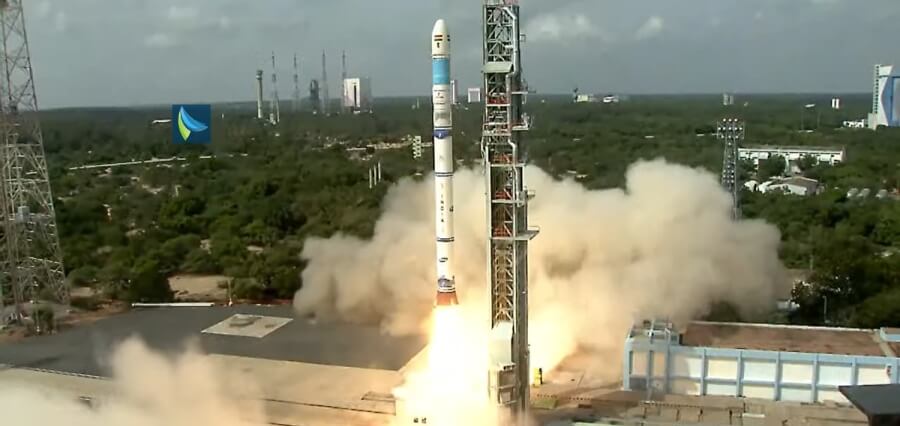The Indian Space Research Organisation (ISRO) successfully launched the EOS-08 Earth Observation Satellite onboard the Small Satellite Launch Vehicle (SSLV)-D3 from the Satish Dhawan Space Centre in Sriharikota on August 16. The SSLV-D3, in its third and final developmental flight, lifted off from the first launch pad at 9:17 am. 
Seventeen minutes later, the EOS-08 satellite was successfully placed into a 475 km circular orbit as planned. ISRO Chairman S. Somanath announced the success of the mission, stating, “The third developmental flight of SSLV, the SSLV-D3 with the EOS-08 satellite, has been successfully accomplished. The rocket has placed the spacecraft in a very precise orbit as planned. There are no deviations in the injection conditions, and everything is perfect.”¬†
With the successful launch of SSLV-D3, ISRO has officially completed the development process of the SSLV. Somanath added, “We are in the process of transferring the SSLV technology to the industry for serial production and launch, marking a significant milestone.”¬†
EOS-08 is a pioneering mission built on ISRO’s standard Microsat/IMS-1 bus, featuring advanced payloads for infrared observation, a novel GNSS-R payload, and a SiC UV dosimeter. The satellite includes several new technological developments in its mainframe systems, such as an Integrated Avionics system (Communication, Baseband, Storage, and Positioning – CBSP), a structural panel embedded with PCB, an embedded battery, a Micro-DGA (Dual Gimbal Antenna), an M-PAA (Phased Array Antenna), a flexible solar panel, and a Nano star sensor, all designed for onboard technology demonstration.¬†
The satellite carries three primary payloads: the Electro Optical Infrared Payload (EOIR), the Global Navigation Satellite System-Reflectometry payload (GNSS-R), and the SiC UV Dosimeter. 
РThe EOIR payload captures images in the Mid-Wave IR (MIR) and Long Wave IR (LWIR) bands during both day and night for applications such as satellite-based surveillance, disaster monitoring, environmental monitoring, fire detection, volcanic activity observation, and industrial and power plant disaster assessment. 
РThe GNSS-R payload demonstrates the use of GNSS-R based remote sensing for applications like ocean surface wind measurement, soil moisture detection, cryosphere applications in the Himalayan region, flood detection, and inland water body monitoring. 
– The SiC UV Dosimeter monitors UV irradiance at the Crew Module’s view port in the Gaganyaan Mission and serves as a high-dose alarm sensor for UV radiation.¬†
The spacecraft is configured to operate in a circular Low Earth Orbit (LEO) at an altitude of 475 km with an inclination of 37.4¬į, and it has a mission life of one year. Also onboard was the SR-0 DEMOSAT, developed by Space Kidz India, which was placed into the intended orbit.¬†
The SSLV is designed to launch mini, micro, or nano satellites (weighing between 10 and 500 kg) into a 500 km planar orbit. It is a three-stage launch vehicle, with all stages using solid propulsion and a liquid propulsion-based Velocity Trimming Module (VTM) as the terminal stage. According to ISRO, the SSLV’s design emphasizes low cost, quick turnaround time, flexibility in accommodating multiple satellites, launch-on-demand capability, and minimal launch infrastructure requirements.¬†
Read More: Click Here


